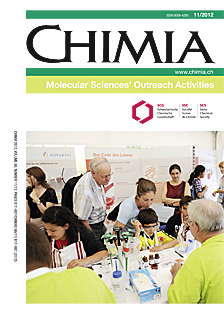Cutting-Edge Life Sciences in Swiss Gymnasia – Success is not a Secret
DOI:
https://doi.org/10.2533/chimia.2012.866Keywords:
Education, Gymnasia, Instructor, Life sciences, TeacherAbstract
What can be done to achieve a high-quality education in Life Sciences at gymnasia level that arouses the interest of most students and motivates them to accomplish high performances? The recipe for success is simple: Employ excellent natural scientists who combine the passion for their subject with strong pedagogic skills as teachers to your school. The challenge is to create an environment that makes teaching attractive for scientists and that has a positive and lasting effect on the motivation of the teachers. We consider the following criteria especially significant: The social structure/arrangement is likely to be the key aspect. Ideally it consists of a constructive relation between the teachers, the school administrators, the staff and most importantly the students. The work must be challenging, but the workload should be in a good proportion to the resources of the teachers. To communicate a realistic impression of Life Sciences an adequate infrastructure and facilities are necessary that allow an education based on experiments and practica. The curriculum should consider the interests of the students and should contain topics which are relevant for society. Finally it should grant enough educational latitude for the teachers so they can use their specialized skills. Contacts to other gymnasia, universities and industry are important for orientation, the exchange of knowledge and to enable extracurricular projects.Downloads
Published
2012-11-26
Issue
Section
Scientific Articles
License
Copyright (c) 2012 Swiss Chemical Society

This work is licensed under a Creative Commons Attribution-NonCommercial 4.0 International License.
How to Cite
[1]
Chimia 2012, 66, 866, DOI: 10.2533/chimia.2012.866.







